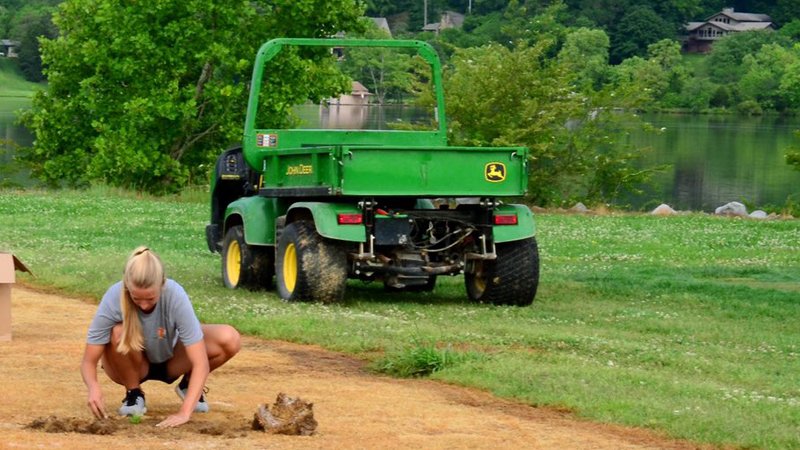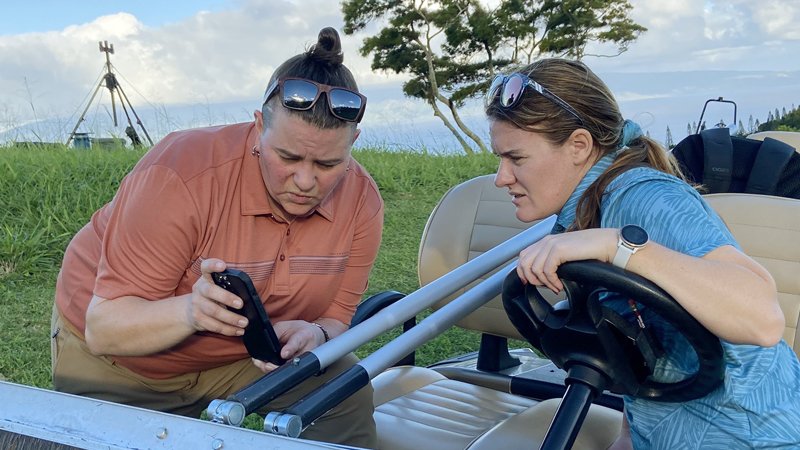
It would have been understandable if Leah Brilman, Ph.D., felt like an outsider the first time she attended a meeting of the Crop Science Society of America more than 40 years ago.
"I was dumb and stupid and decided I was going to do what I was passionate about doing," Brilman, director of product management and technical services at DLF-Pickseed, said of her career in turf. "When I attended the C5 meeting for the first time, I was the only woman in the room.
"I will say, there were a few men who were inappropriate, but the vast majority were accepting and professional. At some point, I knew I had to work with people and accepted that I was in a male-dominated industry."
The turf industry has become a much more inviting environment for women since that CSSA meeting in the early 1980s.
Devon Carroll, Ph.D., chief of staff for Envu, has bachelor's and master's degrees from Penn State and a doctorate from Tennessee. Her introduction into the game came as a golfer in high school and part-time jobs in the clubhouse. She was inspired to pursue a career in turf by a cousin who was a superintendent.
She was unaware there were so few women in turf when she enrolled at Penn State a decade ago.
I immediately thought it was a brilliant idea. I wasn't aware that anyone had tried to do anything like that before. I thought it sounded amazing, and I wanted to be part of that. . . . We asked ourselves, how do we expand this? How do we make it bigger?
"When I made the decision to pursue a degree in turfgrass science I wasn't aware of the gender dominance in the industry," Carroll said. "It was mentioned on my undergraduate campus tour that there were few women, but I didn't appreciate what that meant until my first few weeks on campus as the only female in my program. It was certainly overwhelming to attend classes, turf club meetings and conferences as the lone woman in the room."
In the back of her mind, Carroll knew she might one day change majors, but not because she was outnumbered in the classroom. She thought that never having worked on a golf course might set her back compared with her classmates.
"When I chose turfgrass science as a major, I knew it might not stick since I didn't have prior experience working in golf course maintenance," she said. "Within my first few turf classes though, I was hooked and have never looked back. There have certainly been some challenges in my career related to my gender, but I have great mentors and tremendous support from the injury to keep on going."
Those who have come before Carroll certainly have seen a lot.
"There were times I couldn't go on certain golf courses because the club was male only," Brilman said. "Even as a woman working with the superintendent I couldn't go on the golf course on certain days."

Brilman says it is incumbent on people like herself, who are veterans in the business, to be a resource for the younger generation so they feel welcome and do not become disenfranchised.
"It is important for those of us to make sure those coming behind us have contacts and know people," she said. "And we will continue doing that to make sure things are OK and that they have someone they can talk to. It does make a difference."
Indeed it does.
Networking and educational events for women in turf have been more common since the 2015 GCSAA show in San Antonio. Syngenta's Ladies Leading Turf is undergoing a metamorphosis to make it more inclusive to people of all backgrounds for next year.
The event helped give rise to a grassroots movement to increase the visibility and profile of female agronomists on a worldwide scale beginning with the 2021 U.S. Women's Open at the Olympic Club in San Francisco when superintendent Troy Flanagan had a revelation to host several dozen female superintendents as part of his volunteer crew.
Flanagan turned to longtime friend Kimberly Gard, territory manager for Syngenta, to help make it happen.
There were times I couldn't go on certain golf courses because the club was male only. Even as a woman working with the superintendent I couldn't go on the golf course on certain days.
"I immediately thought it was a brilliant idea," Gard said. "I wasn't aware that anyone had tried to do anything like that before. I thought it sounded amazing, and I wanted to be part of that."
That event helped put the work of female superintendents on the forefront for the world to see, and has subsequently helped launch several similar opportunities, including similar tournament experiences and other events geared specifically for women, like the GCSAA's Women's Leadership Academy.
"We asked ourselves, how do we expand this?" Gard said. "How do we make it bigger?"
Carroll says there is a direct link between women working on a golf course and playing on them.
"I believe the 'see it, be it' mentality is one of the strongest tools we can use to attract more women to the industry," she said. "I didn't meet another female in turfgrass management until I was a year into my studies. It was truly inspiring to see what she had accomplished and I envisioned myself with a similar career trajectory. It is unfortunate I had to have such a long gap before I could make this connection. I'm really pleased that seeing and meeting women is much more accessible today for those entering the turf industry."

